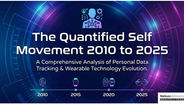'HoloLens' in Healthcare - Hope or Hype?
- Various Authors
- Feb 2, 2018
- 3 min read

Introduction to Microsoft HoloLens
Microsoft HoloLens is the first self-contained, holographic computer, enabling you to engage with your digital content and interact with holograms in the world around you.
To put it in simple terms, it projects images over your vision so they appear as holograms, providing you with more information about the world around you or changing the way you perceive a space.
Unlike virtual reality, which takes over your entire vision and hearing to transport you to another environment, augmented reality complements the world around you.
Features of HoloLens
Holograms are responsive to you and the world around you. Microsoft HoloLens enables you to interact with content and information in the most natural ways possible.
1) Gaze
Built-in sensors let you use your gaze to move the cursor so you can select holograms. Turn your head and the cursor will follow.
2) Gesture
Use simple gestures to open apps, select and size items, and drag and drop holograms in your world.
3) Voice
Use voice commands to navigate, select, open, command, and control your apps. Speak directly to Cortana, who can help you complete tasks.

HoloLens In Healthcare - Real World Example 1 - Stryker
Stryker, a leading global medical technology company, has set out to improve the process for designing operating rooms for hospitals and surgery centres.
Stryker is using HoloLens to build the operating room of the future.
Stryker Communications designs state-of-the-art, customized operating rooms using its ByDesign 3D design software. Microsoft HoloLens extends the capabilities of the ByDesign software, bringing their extensive portfolio of digital 3D assets to life and allowing stakeholders to collaborate in ways they couldn’t before.
Recognizing that the current model of operating room design needs to be evolved from 2D to 3D, and knowing that the needs of these specialties can be quite divergent, Stryker has found a way to design a shared operating room that can accommodate all surgical disciplines in a far more efficient manner.
HoloLens In Healthcare - Real World Example 2 - Case Western Reserve University, the Cleveland Clinic
Case Western Reserve and Cleveland Clinic are partnering with Microsoft on HoloLens as part of its collaboration on its Health Education Campus, a state-of-the-art project that will include the schools of nursing, dental medicine, and medicine, including Cleveland Clinic Lerner College of Medicine, a track within Case Western Reserve’s medical school. One of the project’s primary goals is to pioneer new ways of preparing 21st century health care leaders. Technology is a key element of those efforts, as is an emphasis on inter-professional education. As Cleveland Clinic President and CEO Toby Cosgrove often observes, “health care is a team sport.”
The educational opportunities the HoloLens offers extend well beyond health care. Associate Professor of Electrical Engineering and Computer Science Marc Buchner and a few of his students have worked with the device to model molecules or develop gaming applications.
HoloLens In Healthcare - Real World Example 3 - University College London
University College London is exploring how Microsoft HoloLens can transform medical imaging, like CT scans, into 3D models. Surgeons use these three-dimensional anatomical holograms to plan for complicated surgeries and to help patients get a clearer picture and better understanding of their own bodies.
The plan is to use the technology to help surgeons understand the specific anatomy and condition of a patient. When wearing the HoloLens, surgeons will be able to see an image of the patient’s organs.
The short term hope is this will help with pre-surgical planning. The longer term vision is to super-impose the hologram on the patient during an operation, and for the image to change in real time to reflect what the surgeons are doing.
The technology is being created as a collaboration between the trust, University College London Computer Science, and NHS Code4Health, under the platform for enhanced analytics and computational healthcare (PEACH).
Where does HoloLens fit into the Virtual Reality and Augmented Reality ecosystem?

Conclusion - Hope for Surgery
HoloLens effectively gives doctors 'X-ray vision' to allow them to peer inside patients during surgery. For example surgeons can use the 3D interactive system to get a perspective of the inside of the patient, which accurately guides the surgeon in ways that weren't previously possible.
Any new technology which break barriers and offers its users new functionality previously not possible is hope. In this case more hope for patients to survive complicated surgery and more hope for surgeons to perform effectively with better outcomes.

















































Comments